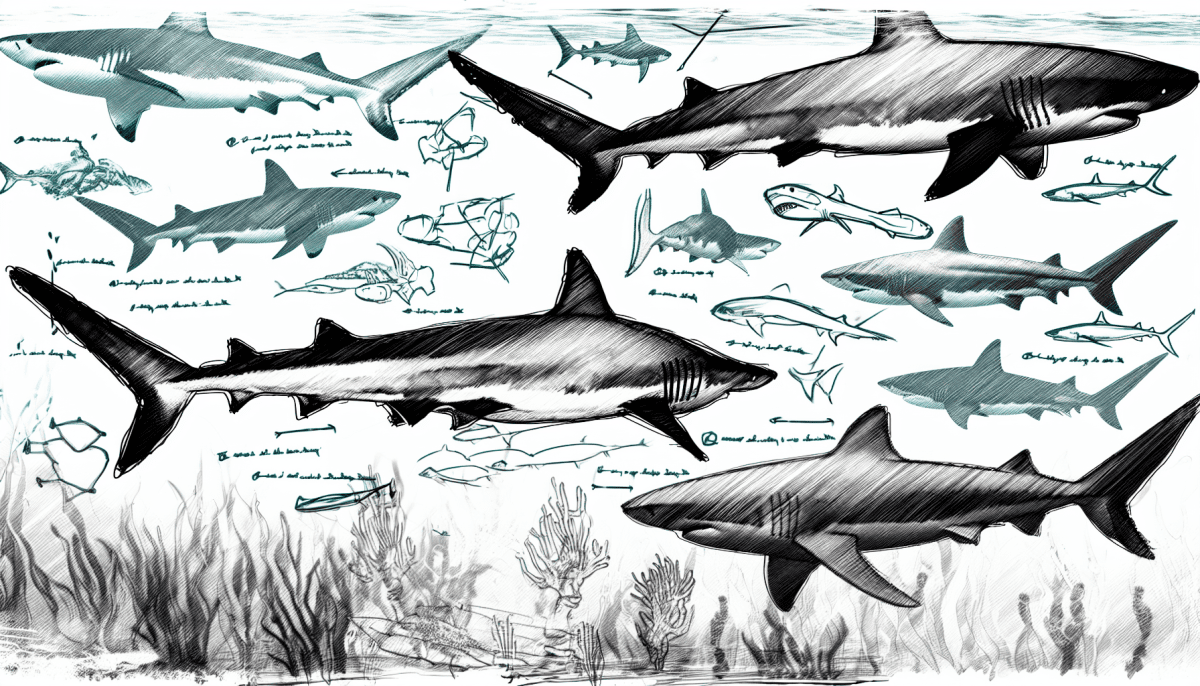Sharks are one of the most fascinating creatures in the ocean, and there are over 500 distinct shark species! Each species has its unique characteristics that make them special in their own right. From the enormous whale shark to the tiny dwarf lanternshark, the diversity among these species is astonishing.
The whale shark, known as the largest fish in the sea, can grow up to 40 feet long! Despite its size, this gentle giant feeds primarily on plankton, showcasing how diverse shark species can be in their diets. On the other hand, the great white shark, infamous for its size and hunting prowess, is known for its powerful bite and predatory instincts. While some sharks are known for their size and strength, others, like the hammerhead shark, are easily recognized due to their unique head shape, which helps them hunt more effectively.
Not all shark species are large; in fact, some are quite small. The dwarf lanternshark, measuring only about 8 inches in length, holds the title of the smallest shark in the world. This tiny shark can be found in the depths of the Caribbean Sea, where it uses bioluminescence to escape predators. Such variations remind us that the world of shark species is not just about formidable hunters but also includes unusual and enchanting creatures that play essential roles in their ecosystems.
Habitats Where Sharks Thrive
Sharks are remarkable creatures that can thrive in a variety of habitats, making them one of the most adaptable marine animals on the planet. From the shallow waters of coastal regions to the depths of the open ocean, different shark species have found their home in unique environments. Each habitat offers distinct opportunities and challenges, contributing to the diverse lifestyles of these fascinating predators.
One of the most common habitats for shark species is the coastal region. Here, sharks often inhabit estuaries and bays where they can find plenty of prey. Species like the sandbar shark and the blacktip reef shark are commonly spotted in these areas, taking advantage of the abundance of fish and smaller marine animals. The warm, shallow waters provide not just food but also a safe space for young sharks to grow and learn to hunt.
On the other end of the spectrum, many shark species thrive in the open ocean. Deep-sea dwellers like the great white shark and the mako shark are renowned for their ability to cover vast distances in search of food. These sharks are powerful swimmers, able to dive to impressive depths while hunting large prey such as seals and fish. The open water is vital for their survival, allowing them to migrate between feeding grounds and breeding areas.
Coral reefs are another essential habitat for various shark species. They provide not only shelter but also a rich source of food. Species like the nurse shark and the reef shark can often be found patrolling these colorful environments, searching for crustaceans and small fish. The reefs support a delicate ecosystem, and the presence of sharks is crucial for maintaining balance, as they help regulate the population of other marine animals.
Unique Features of Different Sharks
Sharks are one of the most diverse groups of animals in the ocean, and each shark species boasts its own unique features that help it thrive in various environments. From the majestic Great White Shark to the elusive Hammerhead, these incredible creatures have adapted in remarkable ways. Let’s explore some of the fascinating characteristics of different shark species.
The Great White Shark is perhaps the most famous of all shark species, known for its size and power. With its streamlined body and impressive jaws filled with sharp teeth, it is a master of the ocean. Great Whites can detect blood in the water from miles away, thanks to their incredible sense of smell. This natural ability makes them formidable hunters, and they often breach the surface to catch seals, displaying their jaw-dropping speed and agility.
In contrast, the Whale Shark, the largest fish in the sea, showcases a soft side of the shark family. Unlike most shark species that are fierce predators, Whale Sharks are gentle giants. They filter-feed on plankton, using their oversized mouths to take in vast amounts of water. Their unique, patterned skin serves not only as camouflage but also as a way for researchers to identify individual sharks, much like a human fingerprint.
Another intriguing shark species is the Hammerhead Shark, renowned for its distinctive head shape. The hammer-like structure of its head increases sensory capabilities, allowing Hammerheads to detect prey more effectively. This unique adaptation helps them hunt in schools, using their wide-set eyes to have a more panoramic view of their surroundings. The amazing adaptations of the Hammerhead illustrate how diverse shark species can be in their physical traits and hunting strategies.
Conservation Efforts for Shark Species
As fascinating and diverse as shark species are, many of them are facing significant threats due to human activity. Overfishing, habitat destruction, and climate change have led to a decline in shark populations around the world. Conservation efforts are crucial to protecting these amazing creatures and ensuring their survival for future generations.
Organizations dedicated to conservation are working tirelessly to implement measures that help protect various shark species. These efforts include establishing protected marine areas where fishing is restricted, giving sharks a safe environment to thrive. By reducing bycatch, which refers to the unintentional capture of non-target species, conservationists aim to safeguard the vulnerable populations of sharks that often end up in fishing nets.
Education and awareness campaigns also play a vital role in conservation efforts. By teaching communities about the importance of shark species in marine ecosystems, these initiatives foster a sense of stewardship among local populations. Schools, aquariums, and nonprofit organizations often participate in programs designed to inform and engage the public about the issues facing shark species, encouraging responsible behaviors and a deeper appreciation for these marine predators.
Finally, international cooperation is essential for the conservation of migratory shark species. Many shark populations traverse national boundaries, which means that effective conservation requires collaboration between nations. Agreements and treaties, like the Convention on Migratory Species, facilitate joint efforts to protect shark species across their migratory routes, ensuring that these incredible creatures can swim freely and flourish in oceans worldwide.



